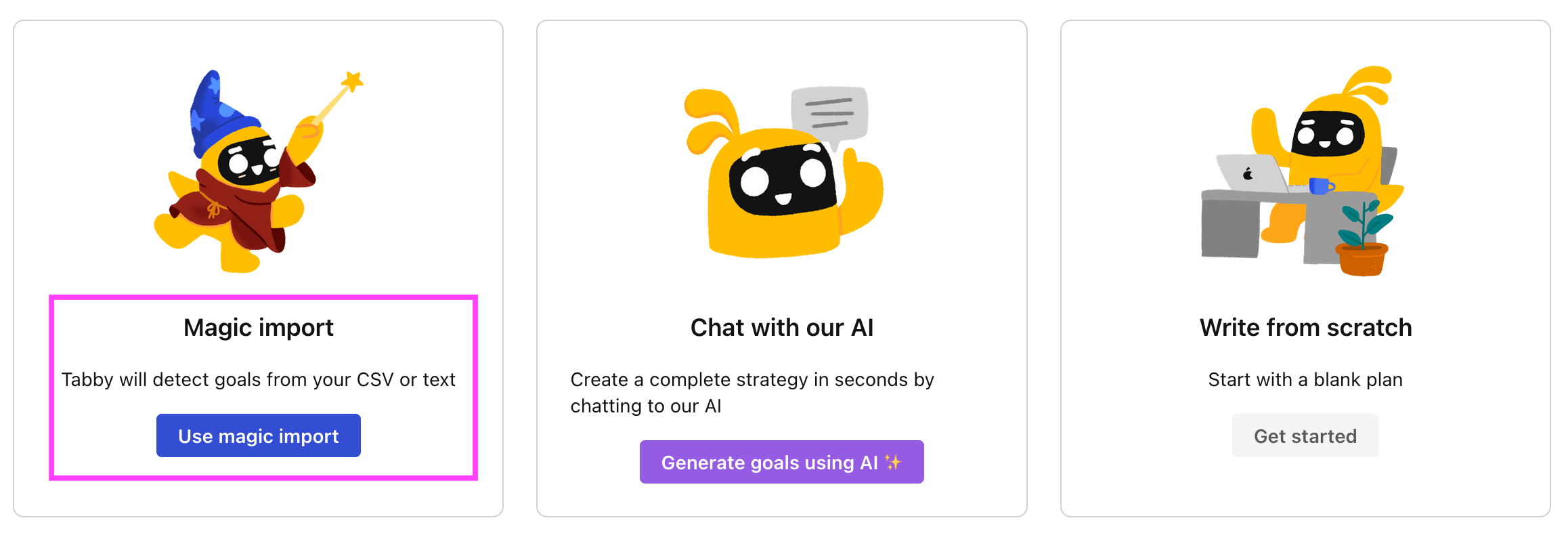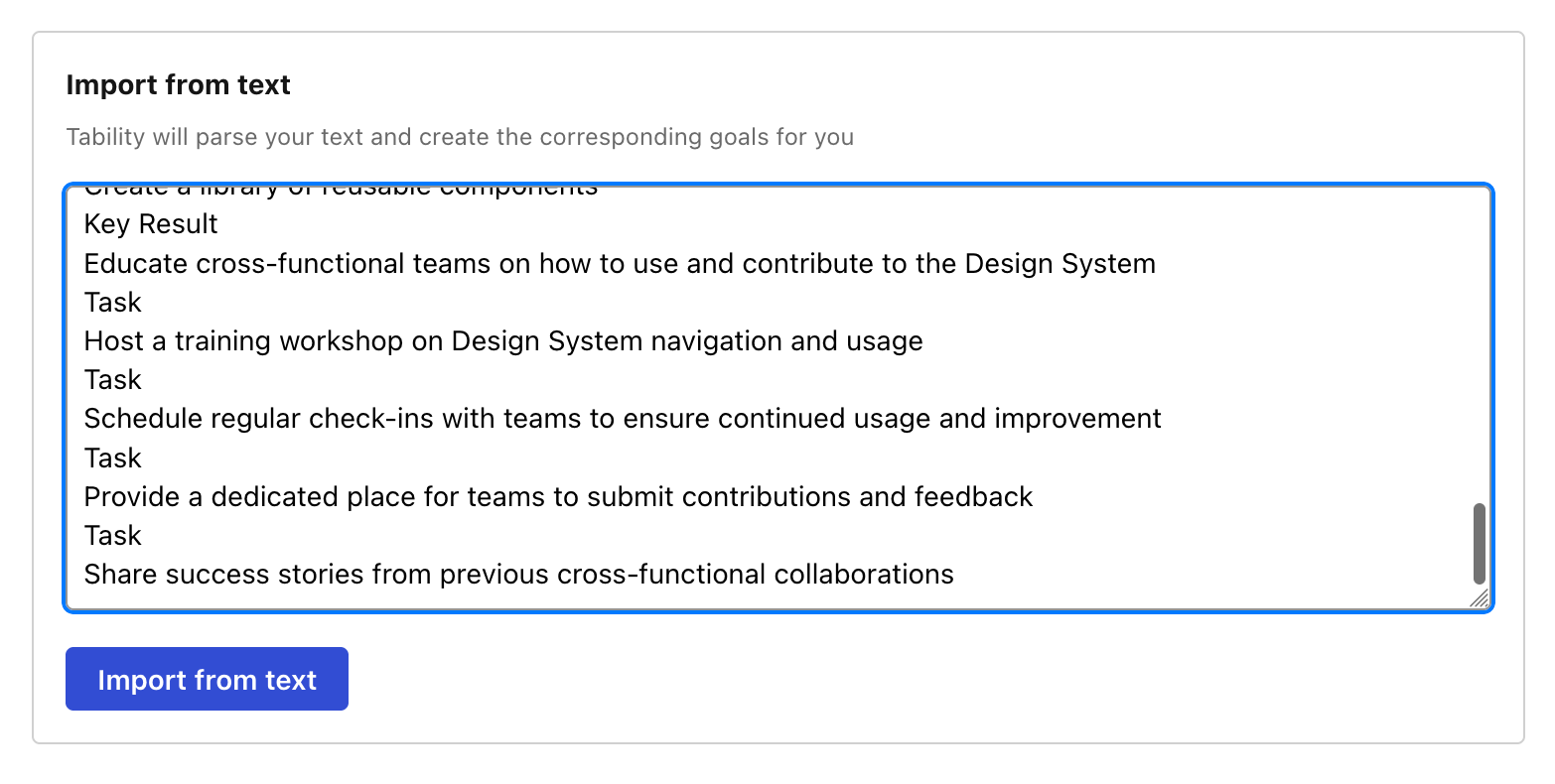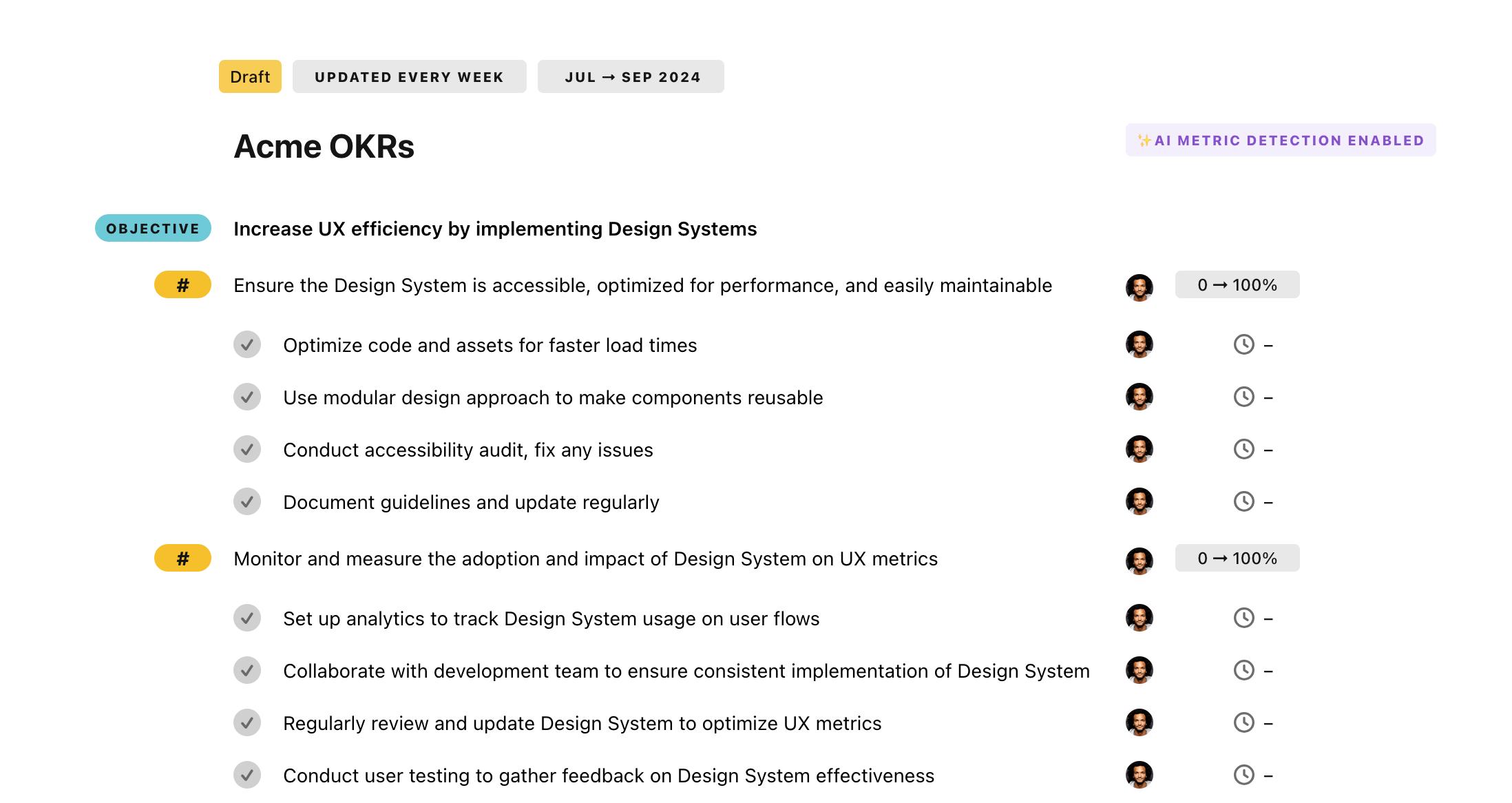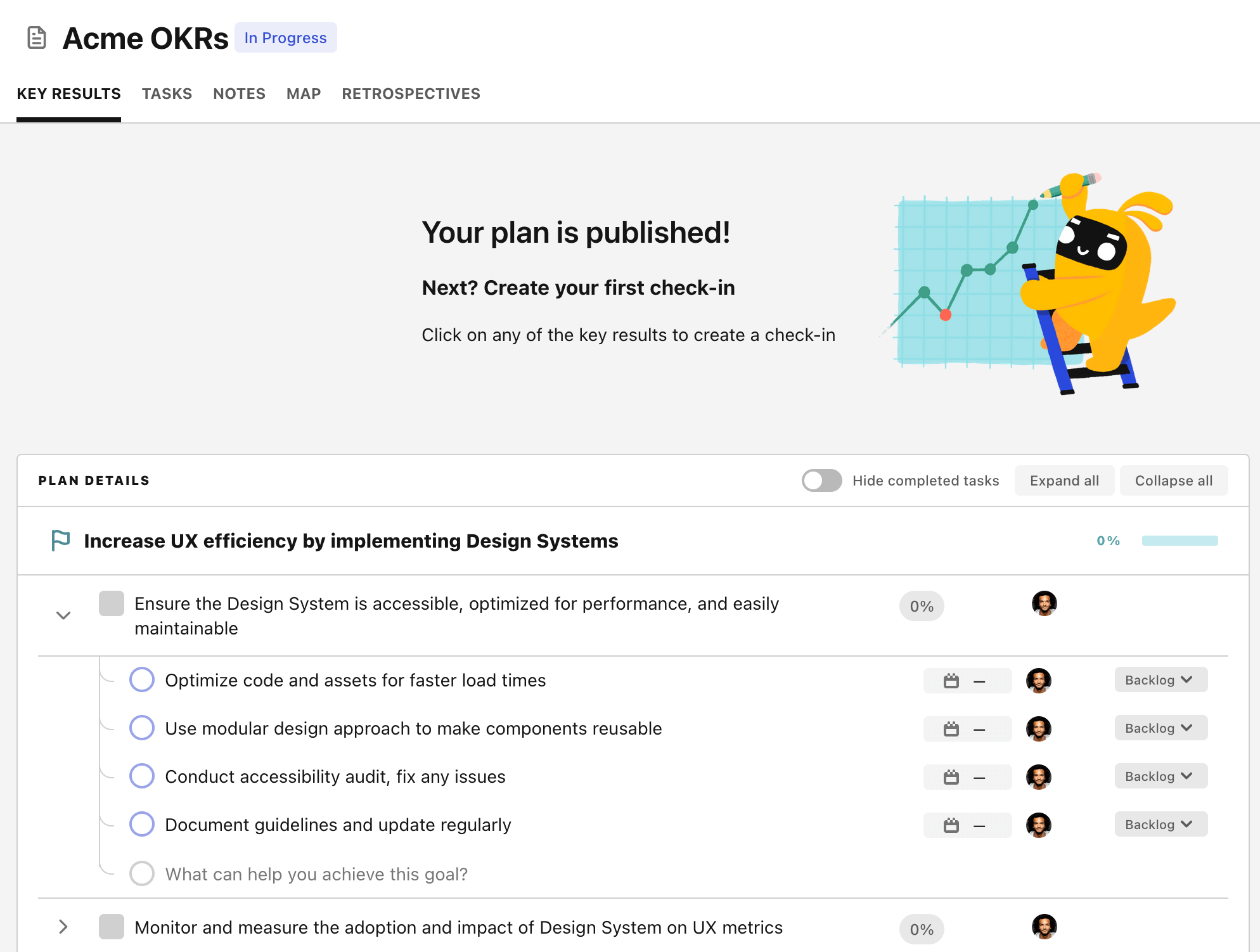OKR template to successful migration of all accounts to new portal
Your OKR template
Simultaneously, user experience is a priority. A 90% user satisfaction rating is the target by the 12th week upon successful login. To achieve this, a user-friendly interface is designed, changes are made as per user feedback and early testing is conducted to make improvements where necessary.
Meanwhile, the error-free migration of 75% of accounts by the 10th week is another goal. Rigorous monitoring and troubleshooting of issues, executing the migration according to the plan, and drafting a detailed outline of account migration can guarantee this. Such initiatives you can expect.
Lastly, all these efforts aim to perform a successful migration of all accounts to a new portal, ensuring user satisfaction and efficient staff training. The end result should be a well-functioning portal providing a positive user experience, and a well-prepared staff to handle the transition effectively.
ObjectiveSuccessful migration of all accounts to new portal
KRTrain 100% of staff on migration processes & new portal functions by week 8
Develop comprehensive training on migration processes & portal functions
Schedule training sessions for all staff before week 8
Monitor and confirm staff completion of training
KRAchieve 90% user satisfaction rating upon successful login on new portal by week 12
Develop an efficient and user-friendly login interface
Implement changes based on user feedback and suggestions
Conduct user testing for early feedback and improvements
KRMigrate 75% of accounts to new portal without errors by week 10
Monitor & resolve issues during migration promptly
Execute migration according to plan, ensuring minimal errors
Develop detailed migration plan for accounts
How to edit and track OKRs with Tability
You'll probably want to edit the examples in this post, and Tability is the perfect tool for it.
Tability is an AI-powered platform that helps teams set better goals, monitor execution, and get help to achieve their objectives faster.
With Tability you can:
- Use AI to draft a complete set of OKRs in seconds
- Connect your OKRs and team goals to your project
- Automate reporting with integrations and built-in dashboard
Instead of having to copy the content of the OKR examples in a doc or spreadsheet, you can use Tability’s magic importer to start using any of the examples in this page.
The import process can be done in seconds, allowing you to edit OKRs directly in a platform that knows how to manage and track goals.
Step 1. Sign up for a free Tability account
Go tohttps://tability.app/signup and create your account (it's free!)
Step 2. Create a plan
Follow the steps after your onboarding to create your first plan, you should get to a page that looks like the picture below.

Step 3. Use the magic importer
Click on Use magic import to open up the Magic Import modal.
Now, go back to the OKR examples, and click on Copy on the example that you’d like to use.

Paste the content in the text import section. Don’t worry about the formatting, Tability’s AI will be able to parse it!

Now, just click on Import from text and let the magic happen.

Once your example is in the plan editor, you will be able to:
- Edit the objectives, key results, and tasks
- Click on the target 0 → 100% to set better target
- Use the tips and the AI to refine your goals
Step 4. Publish your plan
Once you’re done editing, you can publish your plan to switch to the goal-tracking mode.

From there you will have access to all the features that will help you and your team save hours with OKR reporting.
- 10+ built-in dashboards to visualise progress on your goals
- Weekly reminders, data connectors, and smart notifications
- 9 views to map OKRs to strategic projects
- Strategy map to align teams at scale